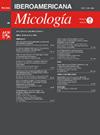异舒康唑在儿童和青少年中的现状和未来应用。
IF 1.6
4区 生物学
Q4 MYCOLOGY
引用次数: 0
摘要
侵袭性真菌感染(IFI)对新生儿、儿童和青少年提出了重大挑战,特别是对免疫功能低下的患者,例如具有一些原发性免疫缺陷或血液恶性肿瘤的患者,以及接受造血干细胞移植的患者。Isavuconazole (ISA)是一种广谱三唑类抗真菌药物,已成为治疗成人IFI的有效替代药物,特别是由曲霉和毛霉菌引起的IFI。美国食品和药物管理局(2023年)和欧洲药品管理局(2024年)最近批准将ISA的使用扩展到儿科人群,为当前的治疗选择提供了重要的补充。两项临床试验评估了ISA在儿科患者中的应用,显示其耐受性良好,具有可接受的安全性。虽然不良事件主要发生在胃肠道和肝脏,但与伏立康唑或两性霉素b脂质体相关的不良事件相比,它们的发生率较低。根据药代动力学研究,儿童的药物清除速度更快,特别是35公斤以下的儿童;因此,剂量需要仔细调整。ISA可能是儿科ifi治疗的一个重要进展,但由于药物浓度的变化,治疗药物监测仍然是必不可少的。本文章由计算机程序翻译,如有差异,请以英文原文为准。
Current and future use of isavuconazole in children and adolescents
Invasive fungal infections (IFI) present significant challenges in newborn, children and adolescents, particularly in immunocompromised patients, such as those with some primary immunodeficiencies or hematologic malignancies, and those who undergo hematopoietic stem cell transplantation. Isavuconazole (ISA), a broad-spectrum triazole antifungal, has emerged as an effective alternative for treating IFI in adults, especially those caused by Aspergillus and Mucorales. Recent approvals by the Food and Drug Administration (2023) and the European Medicines Agency (2024) have extended the use of ISA to paediatric populations, offering an important addition to the current treatment options. Two clinical trials have assessed ISA in paediatric patients, showing it is generally well tolerated, with an acceptable safety profile. While adverse events are primarily gastrointestinal and hepatic, they are less frequent than those associated with voriconazole or liposomal amphotericin B. According to pharmacokinetic studies, drug clearance is faster in children, particularly in those under 35 kg; thus, doses require careful modification.
ISA may represent a crucial advancement in the treatment of paediatric IFIs, but therapeutic drug monitoring remains essential due to variability in drug concentrations.
求助全文
通过发布文献求助,成功后即可免费获取论文全文。
去求助
来源期刊

Revista Iberoamericana De Micologia
MYCOLOGY-
CiteScore
1.90
自引率
0.00%
发文量
17
审稿时长
81 days
期刊介绍:
Revista Iberoamericana de Micología (Ibero-American Journal of Mycology) is the official journal of the Asociación Española de Micología, Asociación Venezolana de Micología and Asociación Argentina de Micología (The Spanish, Venezuelan, and Argentinian Mycology Associations). The Journal gives priority to publishing articles on studies associated with fungi and their pathogenic action on humans and animals, as well as any scientific studies on any aspect of mycology. The Journal also publishes, in Spanish and in English, original articles, reviews, mycology forums, editorials, special articles, notes, and letters to the editor, that have previously gone through a scientific peer review process.
 求助内容:
求助内容: 应助结果提醒方式:
应助结果提醒方式:


